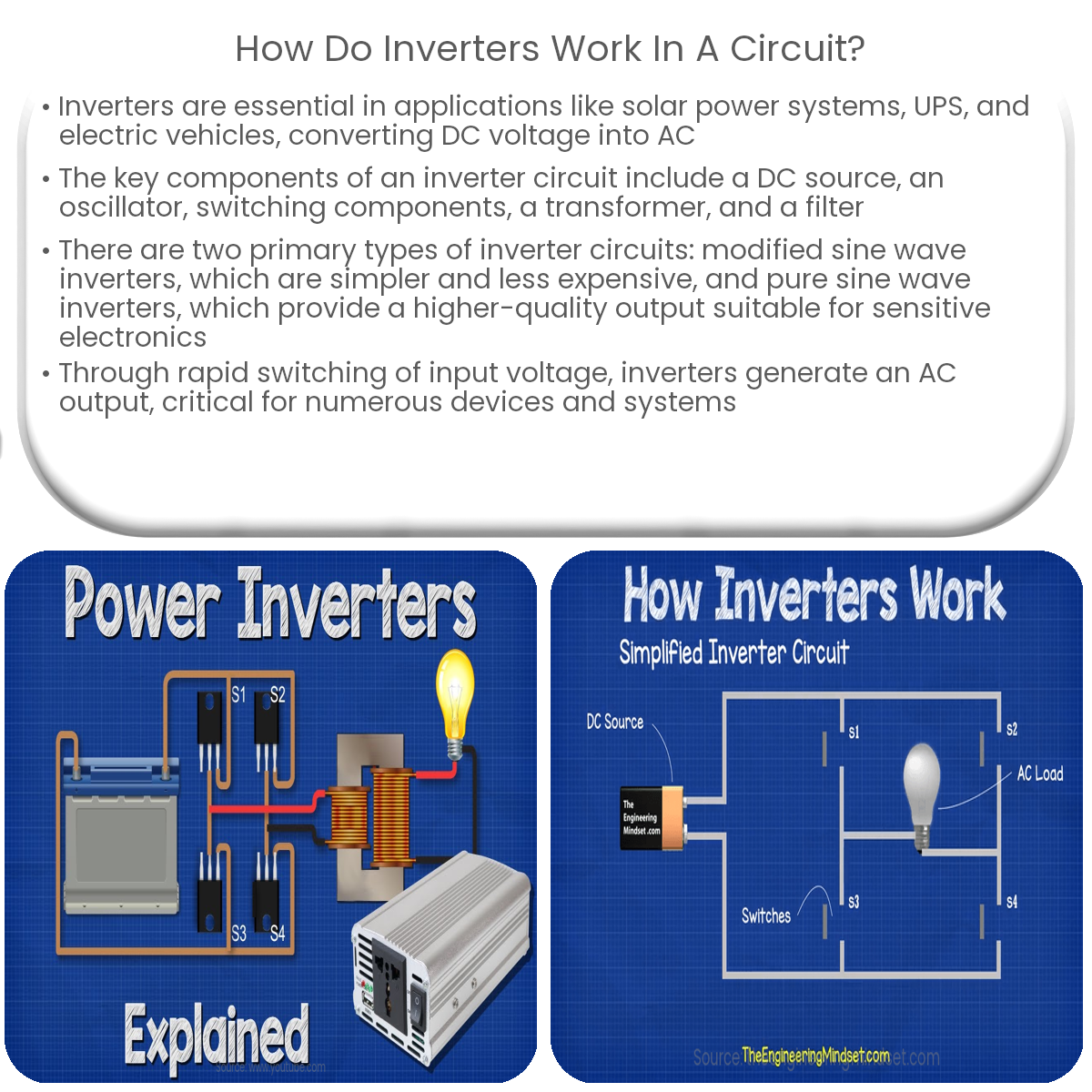Inverters work in a circuit by rapidly switching the DC input voltage on and off, transforming and filtering the waveform to produce AC output.
Understanding the Functioning of Inverters in a Circuit
Inverters play a crucial role in various applications, such as solar power systems, UPS, and electric vehicles. This article will explain how inverters work in a circuit to convert direct current (DC) into alternating current (AC).
Basic Operation
An inverter’s primary function is to change DC voltage, typically provided by a battery or solar panel, into AC voltage. The inverter uses electronic components, such as transistors and diodes, to switch the DC input voltage on and off rapidly, creating a square or stepped waveform. This waveform is then filtered and transformed into a sine wave or a waveform that closely resembles a sine wave.
Components of an Inverter Circuit
An inverter circuit typically consists of the following components:
- DC source: A battery, solar panel, or another source of DC voltage provides the input power for the inverter.
- Oscillator: The oscillator generates a high-frequency signal that drives the switching components, such as transistors or MOSFETs.
- Switching components: Transistors, MOSFETs, or IGBTs switch the DC input voltage on and off, creating a high-frequency waveform.
- Transformer: The high-frequency waveform is fed into a transformer, which increases or decreases the voltage level as needed.
- Filter: The output of the transformer is passed through a filter to smooth out the waveform and generate the desired AC output.
Types of Inverter Circuits
There are several types of inverter circuits, with the two most common being the modified sine wave and the pure sine wave inverters.
Modified Sine Wave Inverter
Modified sine wave inverters generate a stepped AC waveform that approximates a sine wave. The oscillator drives the switching components to create a square or stepped waveform, which is then fed into a transformer and filtered to produce the final AC output. Modified sine wave inverters are simpler in design and less expensive than pure sine wave inverters, but they may not be suitable for sensitive electronic equipment.
Pure Sine Wave Inverter
Pure sine wave inverters generate an AC output waveform that closely resembles a perfect sine wave. They typically use pulse-width modulation (PWM) to control the switching components, creating a more complex and higher-quality AC output. Although pure sine wave inverters are more expensive and complex than their modified sine wave counterparts, they are ideal for sensitive electronic devices that require clean and stable power.
Conclusion
Inverters work in a circuit by converting DC voltage into AC voltage using electronic components to switch the input voltage on and off rapidly. The resulting waveform is then transformed and filtered to produce the desired AC output. Inverter circuits play a critical role in various applications, providing a reliable source of AC power for numerous devices and systems.


